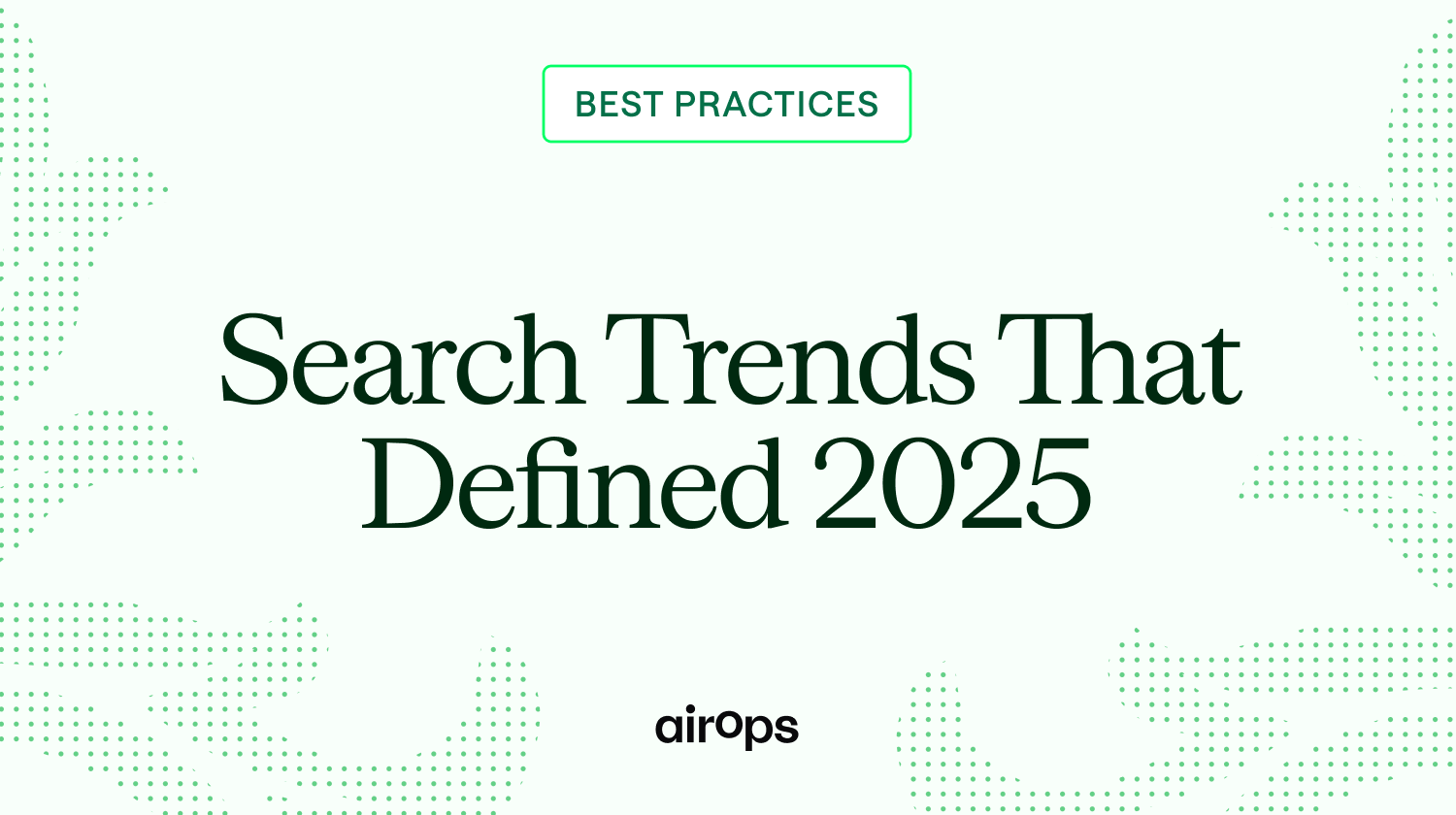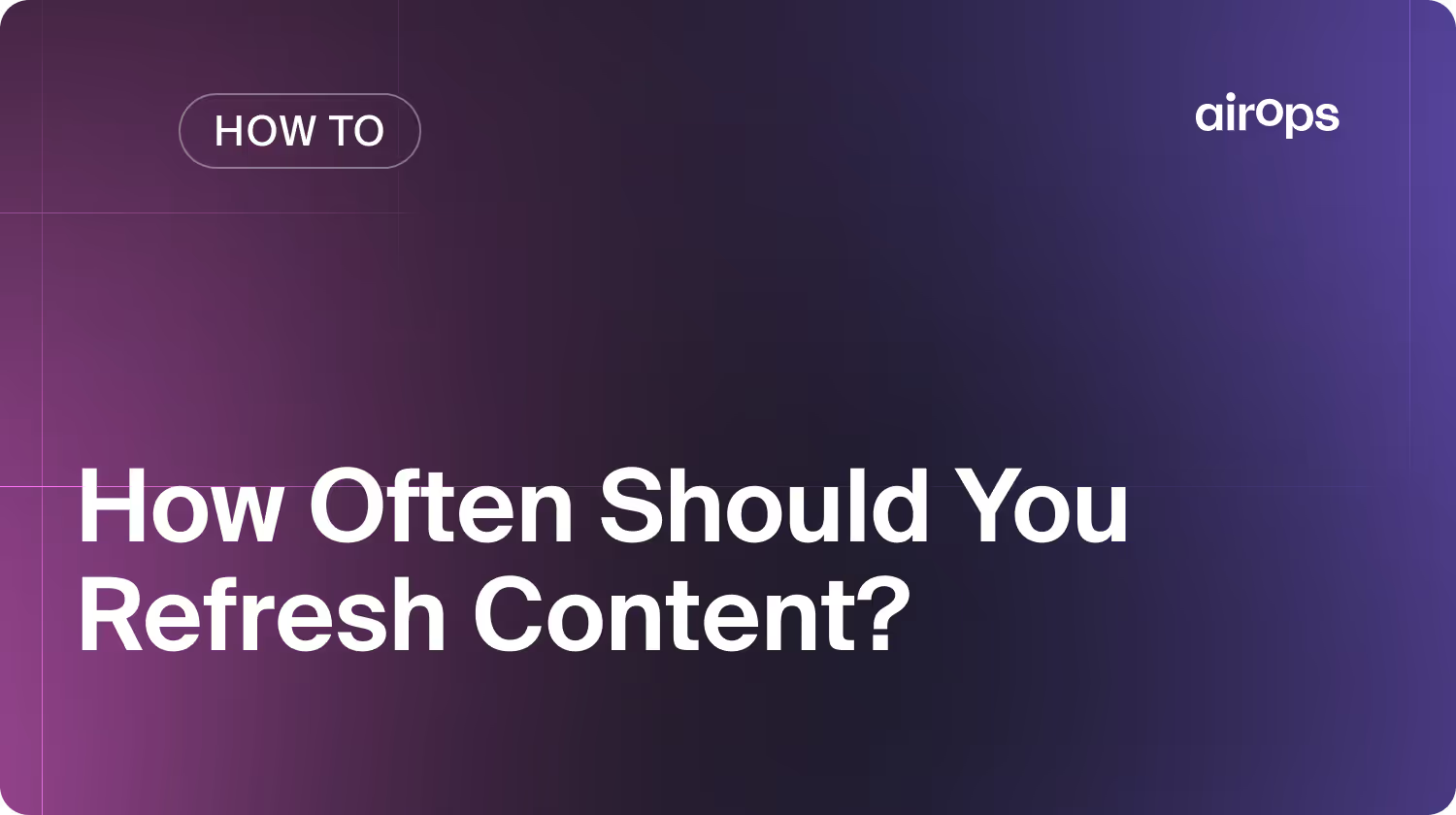SEO Content Optimization: Strategies to Boost Visibility & Authority

- Effective SEO optimization strategies create evergreen assets that compound value over time.
- Modern SEO optimization requires aligning content with user intent, technical structure, and quality to drive visibility and engagement across both search engines and AI platforms.
- This guide breaks down actionable SEO methods and frameworks to help you future-proof your content performance as organic search continues to evolve.
SEO content optimization is critical for driving qualified traffic and supporting broader organic marketing goals.
Modern optimization extends beyond keyword placement. It requires aligning with user intent, enhancing technical structure, and improving content quality to perform across both traditional search engines and AI-driven platforms.
Strategic SEO content optimization transforms existing assets into high-performing, evergreen content that compounds in value over time. By focusing on clarity, structure, and topical authority, you ensure your content is discoverable, citable, and positioned for long-term growth.
What is SEO Content Optimization?
SEO content optimization is the process of improving web content to increase its visibility in search engine results. This involves aligning content with user search intent, integrating relevant keywords, and structuring information for both users and search engines.
The Benefits of SEO Content Optimization
Strategic SEO content optimization produces measurable, long-term gains in visibility, engagement, and authority.
- Improved search engine rankings: Strategic use of keywords, descriptive titles, and logical structure signals value to search engines, increasing your chances of ranking higher for target keywords.
- Increased organic traffic: Higher rankings drive greater visibility and clicks from users searching for your solutions. According to a recent study, building topical authority through comprehensive, interlinked content clusters is a key ranking factor for organic growth.
- Enhanced topical authority: Publishing in-depth, high-quality content around a subject area positions your site as a trusted resource, leading to better rankings and credibility.
- Better user experience: Well-structured, scannable content with clear headings and visuals makes it easier for visitors to find answers and stay engaged.
- Increased engagement and conversions: Optimized content that addresses user needs and includes clear CTAs encourages interaction and drives business results.
Rare Candy saw an 18% increase in product page conversions after using AirOps to execute a targeted SEO content optimization strategy, demonstrating the measurable impact of a strategic content optimization.
Methods to Optimize SEO Content
Implement these research-backed strategies to optimize your content for both search engines and users:
1. Strategic Keyword Research and Intent Matching
Conduct thorough keyword research that goes beyond search volume. Focus on aligning with user search intent, prioritizing target queries that match your business goals, and identifying high-value content opportunities your competitors may have missed.
2. Entity and Semantic Optimization
Optimize for entities and semantic relationships, not just individual keywords. This approach improves topical relevance and enhances your content's visibility in both traditional search results and AI-powered answer engines.
3. Content Structure and Organization
Create content with a logical flow that serves both users and search engines– organizing main points in a hierarchical structure, while incorporating transitional elements to guide readers through your content.
Structure longer pieces with clear sections, use descriptive subheadings that incorporate relevant keywords naturally, and ensure each section builds upon the previous one. According to Unbounce, scannable content tends to outperform content with dense or complex text.
Include summary elements like bullet points or numbered lists to break up dense text and make key information easily scannable for users, search engines, and LLMs.
4. Technical On-Page Elements
- Titles and Meta Descriptions: Craft clear, keyword-rich titles and meta descriptions that accurately summarize your content and encourage clicks
- Header Structure: Use descriptive, hierarchical headings (H1, H2, H3) to enhance readability for both users and search engines
- Content Formatting: Structure content with concise paragraphs, bullet points, and numbered lists to boost readability and increase the likelihood of earning featured snippets
- Image Optimization: Add descriptive alt text to all images for accessibility and SEO context
- Internal Linking: Implement strategic internal links to strengthen site architecture, distribute page authority, and guide users to related resources
- Schema Markup: Add structured data to help search engines understand your content type and enable rich results like FAQs, reviews, and how-to snippets
4. Ongoing Optimization
Regularly perform content gap analyses to identify missing topics, outdated information, and new opportunities. Monitor performance metrics and user feedback to refine your strategy, address emerging search trends, and ensure your content remains authoritative and visible.
Advanced Content Optimization Strategies
Multilingual SEO Implementation
Multilingual SEO expands your content’s global reach by optimizing for different languages and regions. Implementing multilingual SEO strategies include conducting local keyword research for each market, implementing hreflang tags to help search engines deliver the correct language version to users.
Effective multilingual SEO goes beyond simple translation. According to MotionPoint, over 60% of internet users communicate in languages other than English. Multilingual SEO involves localizing content by adapting cultural references, currencies, and examples to each audience.
Maintaining technical best practices—like using canonical tags and language-specific sitemaps—ensures proper indexing and prevents duplicate content issues, helping your site perform better in international search results.
Content Syndication
Content syndication is the process of republishing your original content on third-party platforms to reach new audiences and build authority. When executed strategically, syndication helps extend your brand’s visibility, attract referral traffic, and earn high-quality backlinks that support off-page SEO and boost domain authority.
To maximize results, syndicate only to platforms with higher domain authority than your own and always use canonical tags pointing back to the original source. Publish on your site first, then syndicate after a short delay.
Customize headlines and introductions for each platform’s audience, include author bios with strategic links, and monitor for duplicate content issues using tools like Google Search Console to protect your SEO performance.
How to Measure SEO Content Performance
Measuring SEO content performance helps you refine your strategy and maximize ROI. Track these key metrics:
Core Performance Indicators
Rankings and Traffic: Monitor keyword positions using Google Search Console or Ahrefs, and analyze organic traffic patterns in Google Analytics to assess the impact of your optimized content.
Engagement Metrics: Track time on page, bounce rate, and scroll depth to measure content relevance and user satisfaction. High engagement typically correlates with better search performance.
Authority Signals: Use tools like Moz or Majestic to monitor backlink acquisition and analyze referral traffic to identify which external sites are driving valuable visitors to your content.
Business Impact: Set up conversion tracking in Google Analytics 4 to directly attribute revenue and goal completions to specific content pieces, demonstrating the ROI of your SEO efforts.
How to Optimize Content with AI Tools
AI-powered tools are reshaping how teams approach SEO and implement a scalable AI content strategy. By leveraging advanced automation, you can streamline keyword research, content enrichment, internal linking, and schema markup at scale. However, it’s essential to ensure that AI-generated content remains accurate, valuable, and aligned with user intent.
To maximize results, integrate human oversight into your AI workflows. This approach maintains factual accuracy, consistency in brand voice, and compliance with E-E-A-T (Experience, Expertise, Authoritativeness, and Trustworthiness) standards. According to Bynder, human oversight in generative content still remains crucial to ensure safeguarding brand identity.
Is Content Optimization Worth It?
Optimizing existing content continues to be a proven strategy in driving sustained growth and authority, and teams that invest in ongoing optimization see substantial improvements in search visibility and business results.
Investing in SEO content optimization drives long-term growth by increasing search rankings, attracting qualified visitors, and building industry authority.
How AirOps Can Help With Modern SEO Techniques for Content Performance
AirOps bridges classic SEO and modern AI-driven search by enabling scalable, intelligent content optimization. The platform combines AI-powered content creation with automated keyword analysis, schema markup, and internal linking to boost discoverability and authority.
Built-in growth templates and brand kits ensure consistency, quality, and alignment across all content—empowering teams to produce SEO-friendly assets that perform in both search engines and AI Overviews.
By automating core SEO tasks and aligning with evolving algorithm standards, AirOps helps you create content that’s not just optimized—but future-proof..
Ready to future-proof your content strategy?
Book a strategy session to see how AirOps can help you achieve your most ambitious SEO goals.
Win AI Search.
Increase brand visibility across AI search and Google with the only platform taking you from insights to action.
Get the latest on AI content & marketing
Get the latest in growth and AI workflows delivered to your inbox each week
.avif)





